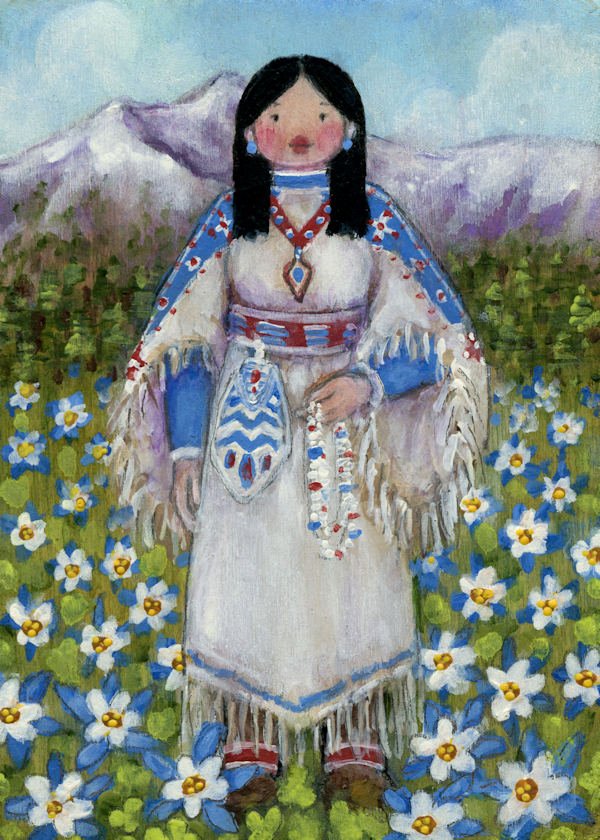Chipeta (White Singing Bird) was born Kiowa Apache, adopted and raised Uncompahgre (Tabeguache) Ute (or Núuchiu) in the Shining Mountains, now called Colorado’s Rocky Mountains. She was skilled in beadwork, played the guitar and could sing in three languages. When she was 15, she was chosen to care for the young son and household of newly-widowered Chief Ouray, and they married a year later in 1859.
By this time, the Colorado Gold Rush was bringing thousands of settlers into the hills, competing with the Utes for land and resources. Ouray was hired by agents as an interpreter, and in 1863, representing the Tabeguache Utes, he attended treaty negotiations with the US government in Washington DC. Due to his leadership and language skills, the US viewed Ouray the representative of all Utes in Colorado, even though he only represented one band. Ouray and Chipeta were in the impossible role of diplomats, trying to maintain peace between the many different Ute peoples and the US government by negotiating treaties.
Chipeta accompanied Ouray when he traveled to tell Ute men of new treaty provisions. She visited with the women and heard how they and their husbands really felt about matters. While other Ute leaders were skeptical of Ouray, Chipeta was welcomed in some camps where Ouray was not. She was the only woman of her time allowed in Ute councils, and at the time, few women anywhere in North America had as much of a political voice as Chipeta.
Chipeta and Ouray helped negotiate several treaties in attempts to keep the Ute homelands, but the terms of the treaties were seldom kept by the US government. In 1868, Ute bands were moved to a reservation on Colorado’s western slope. Gold was found in the San Juan mountains, and that land was carved from Ute Territory in 1873. This loss of land and way of life led to an Ute uprising in 1879. After helping US agents negotiate the release of captives, the hostages were taken to Ouray and Chipeta’s home. Stories of Chipeta’s care and compassion spread and endeared her to the society taking her homeland, but could not stop the colonization. Chipeta and Ouray traveled to Washington DC to negotiate again, but the Ute people were forced from their homes in Colorado to arid northeastern Utah in 1881.
Ouray died in 1880, and in Utah, Chipeta remarried. She taught beadwork to girls, and remained an influential member of her community, caring for many orphans. The US had not followed through on promises of good land and homes on the reservation. In 1916, a former agent sent to investigate reported Chipeta as “destitute” and pleaded for irrigation water for the parched land. Instead, the commissioner of Indian affairs sent Chipeta a shawl. After ceaseless injustices, Chipeta became a sort of celebrity in her later years. People sent her gifts, and President Taft invited her to Colorado to the opening of the Gunnison Tunnel- a project designed to bring water to the new stewards of her homeland, the Uncompahgre Valley. This irony was surely not lost on Chipeta, and she kept her head high as she rode with the president on his train to the ceremony. Chipeta died in 1924, at the age of 81, the same year the US recognized Indigenous people as citizens. She was laid to rest near her old home in Montrose, Colorado.
Here is Chipeta at home in her Shining Mountains~ in a high country meadow of columbine below today’s Chipeta Mountain 💙























